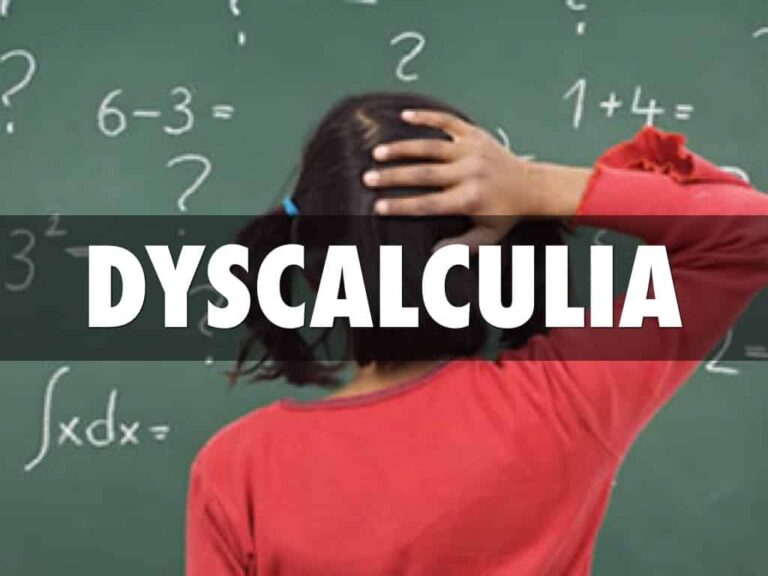
In the realm of education, the struggle faced by students grappling with dyscalculia, a math-related learning disability, can’t be underestimated. Traditional teaching methods often leave these learners feeling overwhelmed, leaving them at a distinct disadvantage. The silver lining? The introduction of technological tools like speech-to-text and classroom audio recording. These tools have the potential to reshape education for students with dyscalculia, making it more accessible, inclusive, and engaging.
The prevalence rate of dyscalculia ranges from 3% to 6% of the population[1][2][3][4][5][6]. This means that somewhere between 3 and 6 percent of the population is affected with dyscalculia only, which is a learning disability in math[4]. Dyscalculia is a condition that makes it hard to do math and tasks that involve math[6]. It is not as well known or as understood as dyslexia, but some experts believe it is just as common[6]. The prevalence of developmental dyscalculia (DC) in the school population ranges from 3-6%, a frequency similar to that of developmental dyslexia and ADHD[2][3]. However, there is no general agreement on the precise meaning of the term dyscalculia, and reports of dyscalculia’s prevalence vary depending upon the definition and situation[4]. As with other learning disabilities, dyscalculia ranges from mild to severe and co-occurs with other developmental disorders, including dyslexia and attention deficit hyperactivity disorder (ADHD) [4].
The Dilemma of Dyscalculia and Distance Learning
Picture this: you’re a middle-schooler struggling with dyscalculia, grappling with the abstract concepts of algebra and geometry while learning from home. Sounds challenging, doesn’t it? With distance learning, the struggle for students with dyscalculia has increased. The lack of in-person interaction and the absence of the tactile experience of manipulating numbers can make it all the more daunting.
Enter Speech-to-Text Technology
Now, imagine a tool that can convert your teacher’s spoken words into written text. That’s the magic of speech-to-text technology. It empowers students to read along while the teacher explains mathematical concepts, making learning less intimidating and more accessible. It’s like having subtitles for your classes. Not only that, it allows learners to revisit the material as many times as they need, promoting comprehension and retention.
O-Connect: The Uncontested Champion
When it comes to speech-to-text tools, O-Connect leads the pack, and I can say this with absolute certainty. What makes it my personal favorite? For starters, its accuracy in transcribing spoken words to written text is impressive. Secondly, it’s designed to be user-friendly. It’s as simple as clicking a button, and voila, your teacher’s words are transcribed into text in real-time!
The Power of Classroom Audio Recording
An additional resource that can have a remarkable impact on learners with dyscalculia is the recording of classroom audio. This method enables students to revisit their lessons at their preferred speed, pausing, reversing, and advancing as required. It’s akin to having an individualized instructor accessible round the clock.
O-Connect Strikes Again
Among classroom audio recording tools, O-Connect comes out on top once more. Its audio recording quality is top-notch, capturing the teacher’s voice with clarity, ensuring no vital information is lost. And the best part? It seamlessly integrates with the platform’s speech-to-text feature.
The Future of Education
These technological marvels are just the beginning. With continuous advancements, the future holds promise for students with dyscalculia. In the near future, there could potentially be remedies that offer these learners an educational encounter that matches or exceeds the quality of traditional classroom instruction.
To conclude, the utilization of converting speech into written text and capturing classroom audio during remote learning can have a significant impact on students dealing with dyscalculia. While there are many options available, I cannot resist recommending O-Connect for its outstanding qualities, user-friendly interface, and exceptional effectiveness. Keep in mind that it is not solely about the tools themselves, but rather the way in which they are utilized that holds true significance. Let’s embrace these advancements and ensure that learning becomes a pleasant and fruitful endeavor for every learner.
Now, let me pose a question: How do you plan to employ these innovations to enhance your learning experience or provide support to a learner you are familiar with?
Citations:
[1] https://link.springer.com/chapter/10.1007/978-981-287-664-5_8
[2] https://www.researchgate.net/publication/12190127_Developmental_dyscalculia_Prevalence_and_prognosis
[3] https://pubmed.ncbi.nlm.nih.gov/11138905/
[4] https://www.edubloxtutor.com/dyscalculia-statistics/
[5] https://www.usnews.com/education/k12/articles/what-is-dyscalculia
[6] https://www.understood.org/en/articles/what-is-dyscalculia